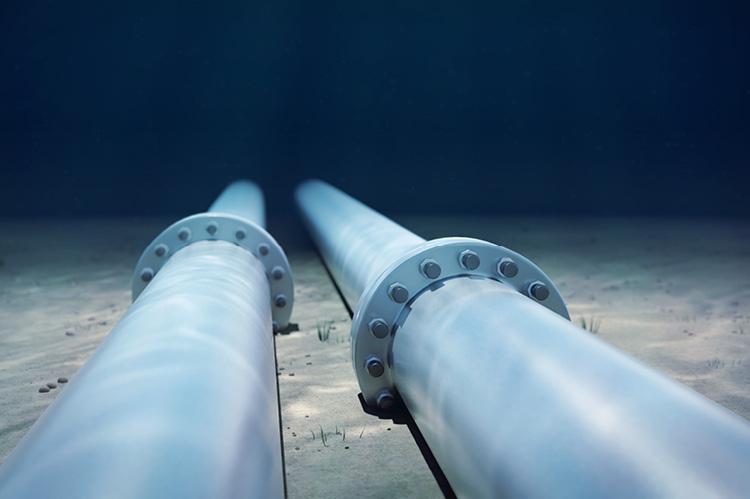

Jessica Rikanti Tawekal
Crack defects in subsea pipelines may lead to pipe wall failure due to leak or rupture. Hence, crack analysis is essential to ensure pipeline integrity by assessing whether it is still fit for service. Cracks are evaluated using stress intensity factor (SIF) under certain loads by ensuring that this factor does not exceed the pipe material fracture toughness, at which point the crack initiates and propagates, leading to pipeline failure.
Failure mechanisms due to cracks in subsea pipeline included fracture and fatigue. Evaluation of the stress intensity factor (SIF) is essential for determining the extent of the cracks' damage. Using extended finite element analysis (XFEM), this study evaluates the stress intensity factor (SIF) of a fractured semi-elliptical imperfect subsea pipeline with ovality. XFEM is a numerical technique that can handle complex geometries and material properties, making it appropriate for evaluating SIF in offshore structures. This study utilise XFEM settings from a previous study validation approach compared with the API 579-1 formula to ensure modelling accuracy. The results suggest that the XFEM method is a dependable and effective tool for evaluating SIF in imperfect subsea pipeline with ovality. In conclusion, the study's findings can serve as a basis for more complex modelling in the future, resulting in a greater understanding of failure mechanisms and an improvement in the design of subsea pipeline.
Prior study that was done is a parametric study to compute SIF values of circumferential semi-elliptical cracks on the external surface of a pipeline with a crack that varies from depths of 4, 5, and 6 mm, and crack lengths of 20, 40, and 60 mm. An API 5L X65 grade pipeline with 254 mm outside diameter and 12.7 mm wall thickness is assessed by utilizing the extended finite element method. The models have been validated using theoretical SIF values calculated using API 579-1, with an average absolute deviation of 2.08%. It is concluded that for these cases, each millimeter increase in initial crack depth may reduce the pipeline pressure capacity up to 12 times compared to the initial crack length.
On the other hand, imperfection such as ovality may be generated at the overbend or sagbend area during pipeline installation on the barge ship. A new research using the same domain from the previous study will be used to analyze the effects of pipeline’s ovality to the resulting SIF. Therefore, another parametric study will be performed to compute SIF values of circumferential semi-elliptical cracks on the external surface of a pipeline with the same specification and internal pressure load from the previous study but with a combination of crack and ovality. The same model was also used for this research. DNV OS F101 stated that the allowable ovality for subsea pipeline is 3%. Therefore, the ovality that is modelled in this research varies from 1% to 4% in hope finding the reason behind the allowable ovality stated by DNV.
Evaluasi pengaruh ovalitas terhadap integrity pipa bawah laut terhadap keretakan pipa
Memberikan pengetahuan mendalam tentang sifat fraktur mekanika pipa akibat keretakan yang dikombinasikan dengan ovalitas